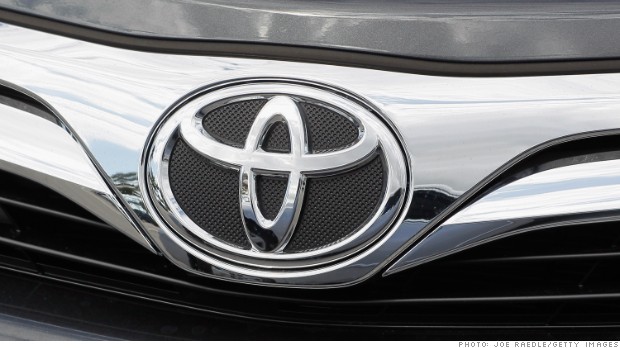<p style=" margin: 12px auto 6px auto; font-family: Helvetica,Arial,Sans-serif; font-style: normal; font-variant: normal; font-weight: normal; font-size: 14px; line-height: normal; font-size-adjust: none; font-stretch: normal; -x-system-font: none; display: block;"> Biglari Holdings 2013 Letter To Shareholders
About the author:Canadian Valuehttp://valueinvestorcanada.blogspot.com/
| Currently 0.00/512345 Rating: 0.0/5 (0 votes) | |

Subscribe via Email

Subscribe RSS Comments Please leave your comment:
More GuruFocus Links
| Latest Guru Picks | Value Strategies |
| Warren Buffett Portfolio | Ben Graham Net-Net |
| Real Time Picks | Buffett-Munger Screener |
| Aggregated Portfolio | Undervalued Predictable |
| ETFs, Options | Low P/S Companies |
| Insider Trends | 10-Year Financials |
| 52-Week Lows | Interactive Charts |
| Model Portfolios | DCF Calculator |
RSS Feed  | Monthly Newsletters |
| The All-In-One Screener | Portfolio Tracking Tool |

MORE GURUFOCUS LINKS
| Latest Guru Picks | Value Strategies |
| Warren Buffett Portfolio | Ben Graham Net-Net |
| Real Time Picks | Buffett-Munger Screener |
| Aggregated Portfolio | Undervalued Predictable |
| ETFs, Options | Low P/S Companies |
| Insider Trends | 10-Year Financials |
| 52-Week Lows | Interactive Charts |
| Model Portfolios | DCF Calculator |
RSS Feed  | Monthly Newsletters |
| The All-In-One Screener | Portfolio Tracking Tool |
BH STOCK PRICE CHART

421.99 (1y: +4%) $(function(){var seriesOptions=[],yAxisOptions=[],name='BH',display='';Highcharts.setOptions({global:{useUTC:true}});var d=new Date();$current_day=d.getDay();if($current_day==5||$current_day==0||$current_day==6){day=4;}else{day=7;} seriesOptions[0]={id:name,animation:false,color:'#4572A7',lineWidth:1,name:name.toUpperCase()+' stock price',threshold:null,data:[[1371790800000,404.21],[1372050000000,400.24],[1372136400000,408.63],[1372222800000,408.3],[1372309200000,409.55],[1372395600000,410.4],[1372654800000,412.85],[1372741200000,414.99],[1372827600000,412.42],[1373000400000,415.38],[1373259600000,415.82],[1373346000000,415.63],[1373432400000,414.81],[1373518800000,418.35],[1373605200000,418.7],[1373864400000,423.71],[1373950800000,422.5],[1374037200000,425.16],[1374123600000,433.98],[1374210000000,430.8],[1374469200000,428.72],[1374555600000,425.13],[1374642000000,420.75],[1374728400000,419.33],[1374814800000,419.13],[1375074000000,416.4],[1375160400000,416],[1375246800000,416.56],[1375333200000,421.98],[1375419600000,432.36],[1375678800000,433.97],[1375765200000,428.47],[1375851600000,431.85],[1375938000000,438.7],[1376024400000,441],[1376283600000,438.67],[1376370000000,439.1],[1376456400000,444.77],[1376542800000,442.79],[1376629200000,442.12],[1376888400000,444.5],[1376974800000,449.7],[1377061200000,456.49],[1377147600000,465.99],[1377234000000,431.71],[1377493200000,429.71],[1377579600000,408.6],[1377666000000,413],[1377752400000,418.36],[1377838800000,417.45],[1378184400000,420.31],[1378270800000,420.29],[1378357200000,417.6],[1378443600000,418.13],[1378702800000,418.53],[1378789200000,419.04],[1378875600000,414.05],[1378962000000,414],[1379048400000,417.96],[1379307600000,418.14],[1379394000000,424.49],[1379480400000,425.01],[1379566800000,427.25],[1379653200000,422.51],[1379912400000,422.41],[1379998800000,422.44],[1380085200000,415.12],[1380171600000,419.19],[1380258000000,413.93],[1380517200000,412.67],[1380603600000,414.97],[1380690000000,415.22],[1380776400000,412.05],[1380862800000,413.99],[1381122000000,413.12],[1381208400000,410.62],[1381294800000,410.93],[1381381200000,413.03],[1381467600000,414.26],[1381726800000,415.33],[1381813200000,411.33],[1381899600000,413.05],[1381986000000,414.4],[1382072400000,416.39],[1! 382331600000,416.7],[1382418000000,415.9],[1382504400000,415.64],[1382590800000,419.86],[1382677200000,421.08],[1382936400000,425.57],[1383022800000,431.69],[1383109200000,430.03],[1383195600000,436.02],[1383282000000,437.37],[1383544800000,445.71],[1383631200000,453.21],[1383717600000,454.08],[1383804000000,456.95],[1383890400000,456.46],[1384149600000,455.71],[1384236000000,455.04],[1384322400000,456.74],[1384408800000,456.51],[1384495200000,461.72],[1384754400000,460.25],[1384840800000,460.61],[1384927200000,462.89],[1385013600000,474.58],[1385100000000,478.01],[1385359200000,480.34],[1385445600000,480.79],[1385532000000,483.9],[1385704800000,485.06],[1385964000000,474.87],[1386050400000,481.59],[1386136800000,480.44],[1386223200000,480.59],[1386309600000,490.17],[1386568800000,495.72],[1386655200000,485.34],[1386741600000,479.24],[1386828000000,477.09],[1386914400000,475.31],[1387173600000,483.55],[1387260000000,480.36],[1387346400000,482.68],[1387432800000,488.25],[1387519200000,498.5],[1387778400000,511.06],[1387864800000,519.21],[1388037600000,519.27],[1388124000000,518],[1388383200000,509.95],[1388469600000,506.64],[1388642400000,500.68],[1388728800000,502.17],[1388988000000,485.82],[1389074400000,484.87],[1389160800000,478.7],[1389247200000,476.09],[1389333600000,479.56],[1389592800000,483.21],[1389679200000,491.97],[1389765600000,487.8],[1389852000000,490.02],[1389938400000,486.38],[1390284000000,485.33],[1390370400000,484.51],[1390456800000,474.08],[1390543200000,466.06],[1390802400000,457.35],[1390888800000,445],[1390975200000,441.72],[1391061600000,444.74],[1391148000000,436.96],[1391407200000,425.68],[1391493600000,420.49],[1391580000000,413.62],[1391666400000,419.15],[1391752800000,421.31],[1392012000000,418.04],[1392098400000,429.03],[1392184800000,430.76],[1392271200000,430.28],[1392357600000,430.83],[1392703200000,427.29],[1392789600000,423.01],[1392876000000,429.49],[1392962400000,436.11],[1393221600000,439.77],[1393308000000,440.14],[1393394400000,446.25],[1393480800000,446.04],[1393! 567200000! ,448.99],[1393826400000,445.6],[1

 HONG KONG (CNNMoney) Toyota has issued three new recalls covering more than 1.75 million vehicles, the latest in a string of safety setbacks for the automaker.
HONG KONG (CNNMoney) Toyota has issued three new recalls covering more than 1.75 million vehicles, the latest in a string of safety setbacks for the automaker.  Meet a million-dollar Toyota
Meet a million-dollar Toyota  Bloomberg
Bloomberg 
 MORE GURUFOCUS LINKS
MORE GURUFOCUS LINKS  421.99 (1y: +4%) $(function(){var seriesOptions=[],yAxisOptions=[],name='BH',display='';Highcharts.setOptions({global:{useUTC:true}});var d=new Date();$current_day=d.getDay();if($current_day==5||$current_day==0||$current_day==6){day=4;}else{day=7;} seriesOptions[0]={id:name,animation:false,color:'#4572A7',lineWidth:1,name:name.toUpperCase()+' stock price',threshold:null,data:[[1371790800000,404.21],[1372050000000,400.24],[1372136400000,408.63],[1372222800000,408.3],[1372309200000,409.55],[1372395600000,410.4],[1372654800000,412.85],[1372741200000,414.99],[1372827600000,412.42],[1373000400000,415.38],[1373259600000,415.82],[1373346000000,415.63],[1373432400000,414.81],[1373518800000,418.35],[1373605200000,418.7],[1373864400000,423.71],[1373950800000,422.5],[1374037200000,425.16],[1374123600000,433.98],[1374210000000,430.8],[1374469200000,428.72],[1374555600000,425.13],[1374642000000,420.75],[1374728400000,419.33],[1374814800000,419.13],[1375074000000,416.4],[1375160400000,416],[1375246800000,416.56],[1375333200000,421.98],[1375419600000,432.36],[1375678800000,433.97],[1375765200000,428.47],[1375851600000,431.85],[1375938000000,438.7],[1376024400000,441],[1376283600000,438.67],[1376370000000,439.1],[1376456400000,444.77],[1376542800000,442.79],[1376629200000,442.12],[1376888400000,444.5],[1376974800000,449.7],[1377061200000,456.49],[1377147600000,465.99],[1377234000000,431.71],[1377493200000,429.71],[1377579600000,408.6],[1377666000000,413],[1377752400000,418.36],[1377838800000,417.45],[1378184400000,420.31],[1378270800000,420.29],[1378357200000,417.6],[1378443600000,418.13],[1378702800000,418.53],[1378789200000,419.04],[1378875600000,414.05],[1378962000000,414],[1379048400000,417.96],[1379307600000,418.14],[1379394000000,424.49],[1379480400000,425.01],[1379566800000,427.25],[1379653200000,422.51],[1379912400000,422.41],[1379998800000,422.44],[1380085200000,415.12],[1380171600000,419.19],[1380258000000,413.93],[1380517200000,412.67],[1380603600000,414.97],[1380690000000,415.22],[1380776400000,412.05],[1380862800000,413.99],[1381122000000,413.12],[1381208400000,410.62],[1381294800000,410.93],[1381381200000,413.03],[1381467600000,414.26],[1381726800000,415.33],[1381813200000,411.33],[1381899600000,413.05],[1381986000000,414.4],[1382072400000,416.39],[1! 382331600000,416.7],[1382418000000,415.9],[1382504400000,415.64],[1382590800000,419.86],[1382677200000,421.08],[1382936400000,425.57],[1383022800000,431.69],[1383109200000,430.03],[1383195600000,436.02],[1383282000000,437.37],[1383544800000,445.71],[1383631200000,453.21],[1383717600000,454.08],[1383804000000,456.95],[1383890400000,456.46],[1384149600000,455.71],[1384236000000,455.04],[1384322400000,456.74],[1384408800000,456.51],[1384495200000,461.72],[1384754400000,460.25],[1384840800000,460.61],[1384927200000,462.89],[1385013600000,474.58],[1385100000000,478.01],[1385359200000,480.34],[1385445600000,480.79],[1385532000000,483.9],[1385704800000,485.06],[1385964000000,474.87],[1386050400000,481.59],[1386136800000,480.44],[1386223200000,480.59],[1386309600000,490.17],[1386568800000,495.72],[1386655200000,485.34],[1386741600000,479.24],[1386828000000,477.09],[1386914400000,475.31],[1387173600000,483.55],[1387260000000,480.36],[1387346400000,482.68],[1387432800000,488.25],[1387519200000,498.5],[1387778400000,511.06],[1387864800000,519.21],[1388037600000,519.27],[1388124000000,518],[1388383200000,509.95],[1388469600000,506.64],[1388642400000,500.68],[1388728800000,502.17],[1388988000000,485.82],[1389074400000,484.87],[1389160800000,478.7],[1389247200000,476.09],[1389333600000,479.56],[1389592800000,483.21],[1389679200000,491.97],[1389765600000,487.8],[1389852000000,490.02],[1389938400000,486.38],[1390284000000,485.33],[1390370400000,484.51],[1390456800000,474.08],[1390543200000,466.06],[1390802400000,457.35],[1390888800000,445],[1390975200000,441.72],[1391061600000,444.74],[1391148000000,436.96],[1391407200000,425.68],[1391493600000,420.49],[1391580000000,413.62],[1391666400000,419.15],[1391752800000,421.31],[1392012000000,418.04],[1392098400000,429.03],[1392184800000,430.76],[1392271200000,430.28],[1392357600000,430.83],[1392703200000,427.29],[1392789600000,423.01],[1392876000000,429.49],[1392962400000,436.11],[1393221600000,439.77],[1393308000000,440.14],[1393394400000,446.25],[1393480800000,446.04],[1393! 567200000! ,448.99],[1393826400000,445.6],[1
421.99 (1y: +4%) $(function(){var seriesOptions=[],yAxisOptions=[],name='BH',display='';Highcharts.setOptions({global:{useUTC:true}});var d=new Date();$current_day=d.getDay();if($current_day==5||$current_day==0||$current_day==6){day=4;}else{day=7;} seriesOptions[0]={id:name,animation:false,color:'#4572A7',lineWidth:1,name:name.toUpperCase()+' stock price',threshold:null,data:[[1371790800000,404.21],[1372050000000,400.24],[1372136400000,408.63],[1372222800000,408.3],[1372309200000,409.55],[1372395600000,410.4],[1372654800000,412.85],[1372741200000,414.99],[1372827600000,412.42],[1373000400000,415.38],[1373259600000,415.82],[1373346000000,415.63],[1373432400000,414.81],[1373518800000,418.35],[1373605200000,418.7],[1373864400000,423.71],[1373950800000,422.5],[1374037200000,425.16],[1374123600000,433.98],[1374210000000,430.8],[1374469200000,428.72],[1374555600000,425.13],[1374642000000,420.75],[1374728400000,419.33],[1374814800000,419.13],[1375074000000,416.4],[1375160400000,416],[1375246800000,416.56],[1375333200000,421.98],[1375419600000,432.36],[1375678800000,433.97],[1375765200000,428.47],[1375851600000,431.85],[1375938000000,438.7],[1376024400000,441],[1376283600000,438.67],[1376370000000,439.1],[1376456400000,444.77],[1376542800000,442.79],[1376629200000,442.12],[1376888400000,444.5],[1376974800000,449.7],[1377061200000,456.49],[1377147600000,465.99],[1377234000000,431.71],[1377493200000,429.71],[1377579600000,408.6],[1377666000000,413],[1377752400000,418.36],[1377838800000,417.45],[1378184400000,420.31],[1378270800000,420.29],[1378357200000,417.6],[1378443600000,418.13],[1378702800000,418.53],[1378789200000,419.04],[1378875600000,414.05],[1378962000000,414],[1379048400000,417.96],[1379307600000,418.14],[1379394000000,424.49],[1379480400000,425.01],[1379566800000,427.25],[1379653200000,422.51],[1379912400000,422.41],[1379998800000,422.44],[1380085200000,415.12],[1380171600000,419.19],[1380258000000,413.93],[1380517200000,412.67],[1380603600000,414.97],[1380690000000,415.22],[1380776400000,412.05],[1380862800000,413.99],[1381122000000,413.12],[1381208400000,410.62],[1381294800000,410.93],[1381381200000,413.03],[1381467600000,414.26],[1381726800000,415.33],[1381813200000,411.33],[1381899600000,413.05],[1381986000000,414.4],[1382072400000,416.39],[1! 382331600000,416.7],[1382418000000,415.9],[1382504400000,415.64],[1382590800000,419.86],[1382677200000,421.08],[1382936400000,425.57],[1383022800000,431.69],[1383109200000,430.03],[1383195600000,436.02],[1383282000000,437.37],[1383544800000,445.71],[1383631200000,453.21],[1383717600000,454.08],[1383804000000,456.95],[1383890400000,456.46],[1384149600000,455.71],[1384236000000,455.04],[1384322400000,456.74],[1384408800000,456.51],[1384495200000,461.72],[1384754400000,460.25],[1384840800000,460.61],[1384927200000,462.89],[1385013600000,474.58],[1385100000000,478.01],[1385359200000,480.34],[1385445600000,480.79],[1385532000000,483.9],[1385704800000,485.06],[1385964000000,474.87],[1386050400000,481.59],[1386136800000,480.44],[1386223200000,480.59],[1386309600000,490.17],[1386568800000,495.72],[1386655200000,485.34],[1386741600000,479.24],[1386828000000,477.09],[1386914400000,475.31],[1387173600000,483.55],[1387260000000,480.36],[1387346400000,482.68],[1387432800000,488.25],[1387519200000,498.5],[1387778400000,511.06],[1387864800000,519.21],[1388037600000,519.27],[1388124000000,518],[1388383200000,509.95],[1388469600000,506.64],[1388642400000,500.68],[1388728800000,502.17],[1388988000000,485.82],[1389074400000,484.87],[1389160800000,478.7],[1389247200000,476.09],[1389333600000,479.56],[1389592800000,483.21],[1389679200000,491.97],[1389765600000,487.8],[1389852000000,490.02],[1389938400000,486.38],[1390284000000,485.33],[1390370400000,484.51],[1390456800000,474.08],[1390543200000,466.06],[1390802400000,457.35],[1390888800000,445],[1390975200000,441.72],[1391061600000,444.74],[1391148000000,436.96],[1391407200000,425.68],[1391493600000,420.49],[1391580000000,413.62],[1391666400000,419.15],[1391752800000,421.31],[1392012000000,418.04],[1392098400000,429.03],[1392184800000,430.76],[1392271200000,430.28],[1392357600000,430.83],[1392703200000,427.29],[1392789600000,423.01],[1392876000000,429.49],[1392962400000,436.11],[1393221600000,439.77],[1393308000000,440.14],[1393394400000,446.25],[1393480800000,446.04],[1393! 567200000! ,448.99],[1393826400000,445.6],[1


 Popular Posts: The Best Ways to Buy the Alibaba IPO5 Cheap Stocks Under $10 to Buy Now5 Top Fidelity Mutual Funds to Own Recent Posts: RadioShack – The Vultures Are Circling RSH Stock. Should You Be? 7 Reasons to Believe in JCP Stock Again Could Yahoo Become the Next Berkshire Hathaway? View All Posts
Popular Posts: The Best Ways to Buy the Alibaba IPO5 Cheap Stocks Under $10 to Buy Now5 Top Fidelity Mutual Funds to Own Recent Posts: RadioShack – The Vultures Are Circling RSH Stock. Should You Be? 7 Reasons to Believe in JCP Stock Again Could Yahoo Become the Next Berkshire Hathaway? View All Posts  RadioShack’s plans to close 1,100 stores over the next five years were scuttled by lenders in mid-May when the terms for allowing it to do so were deemed unacceptable by RSH management and board. As a result, it's closing fewer stores and will instead find other ways to cut costs.
RadioShack’s plans to close 1,100 stores over the next five years were scuttled by lenders in mid-May when the terms for allowing it to do so were deemed unacceptable by RSH management and board. As a result, it's closing fewer stores and will instead find other ways to cut costs. Popular Posts: 3 ‘Double Whammy’ Tech Stocks to SellBank Stocks Are About to Get Much More Attractive3 Dividend Growth Stocks to Buy Recent Posts: 2 Stocks With Bullish Insider Buying Bank Stocks Are About to Get Much More Attractive 3 ‘Double Whammy’ Tech Stocks to Sell View All Posts
Popular Posts: 3 ‘Double Whammy’ Tech Stocks to SellBank Stocks Are About to Get Much More Attractive3 Dividend Growth Stocks to Buy Recent Posts: 2 Stocks With Bullish Insider Buying Bank Stocks Are About to Get Much More Attractive 3 ‘Double Whammy’ Tech Stocks to Sell View All Posts